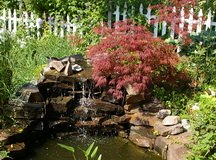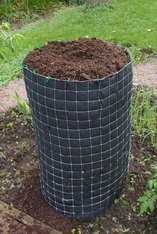


The hardest thing to accept in the garden is that some things are just unexplainable. The Cutleaf Japanese Maple that I have been training over the waterfall for at least six years; is dead. It’s just dead. No leaves have emerged and now that it is mid-June and its branches are dry and brittle, it’s highly unlikely that any ever will. Deep snow cover this winter and no extremely cold temperatures but, like two of my Hosta, toughest perennials in the garden, the little maple just died. I cannot explain it but I have already started looking for a replacement.  If your garden needs rain just invite me to bring my hoe over to your patch. There is one large section where most of the Peppers are planted, that I have hoed three times. Each time the weeds were relatively small so I didn’t see the need to pick them all up, just let them compost where they were. Each evening after I have hoed, it has rained. In the morning the little transplanted weeds, albeit a little the worse for wear, are smiling up at me and thriving in their new location. I’m going to check the weather report before I attack that section again.
If your garden needs rain just invite me to bring my hoe over to your patch. There is one large section where most of the Peppers are planted, that I have hoed three times. Each time the weeds were relatively small so I didn’t see the need to pick them all up, just let them compost where they were. Each evening after I have hoed, it has rained. In the morning the little transplanted weeds, albeit a little the worse for wear, are smiling up at me and thriving in their new location. I’m going to check the weather report before I attack that section again. My mulching has turned into an experiment. I’m using a variety of the mulches that are readily available and will be reporting on them periodically over the next year. I want to know which ones are the: 1. easiest to apply, 2. look the best over a whole season, 3. cost the least or appear to be best value for money, 4. actually do their intended job controlling weeds and retaining moisture, 5. are easiest to deal with next spring when I want to work the beds or plant new things. Watch for the developing story on the mulch page at Gardening-enjoyed. Going forward to the end of June I have to get all of the containers in the correct spots, some new lettuce seed planted, the Orchids divided and repotted and by the end of the month I will plant the Parsnip and Rutabaga seeds in the garden, probably where the quickly ripening peas presently are. We will be away fo the first two weeks of July and I don’t want to leave my garden sitters with too much work. It appears that our son is getting married in England the same week that the Hampton Court flower show is on. Wednesday to the show and Thursday do the wedding flowers and Friday the big celebration. I will try to find the time to give you an overview of the Hampton Court show and we will be touring a few gardens after the wedding and letting all of you enjoy them with us. Stay tuned.  Did I mention that my Iris Acoma won Best of Show last week. Not that I’m competitive !
Did I mention that my Iris Acoma won Best of Show last week. Not that I’m competitive ! Questions My newsletter subscribers get to ask me questions. Just ‘reply’ to the email newsletter. It is always interesting to read the questions; mostly to see if I actually can answer them or if I have to wade into the textbooks to research the answers. If that happens then we all learn something. Art asks? I had to dig up all of the beds around the front of the house to fix the weeping tile and now the soil, that is there, is all heavy clay. Do I need to dig it out and replace it? Ken Answers! Good loam soils consist of three things. Clay, sand and organic matter. You apparently already have enough clay so we just need to add a few things. Sand is the most important at this point. Spread it on and mix it in to break up the clay and make it more free draining. When the soil no longer clumps, when you squeeze it in your hand, then you have enough sand. Now you can continue over the years to continue to add compost to get a really good loam soil. Sue asks? I have 2 Rose of Sharon in my back yard. They have been doing beautifully until this year. The white one is great but the lavender blue one is not. Only half the bush has leaves (vertically). Is there anything that I can do to save it? If I were to put a pond in the backyard, are there any rules about were it should go? |
 It has been very hectic in the garden since my return from Corner Brook. Many things to get planted and the Cucumbers are still in the cold frame as are all of the Peppers, Eggplant and Impatiens that are going into the
It has been very hectic in the garden since my return from Corner Brook. Many things to get planted and the Cucumbers are still in the cold frame as are all of the Peppers, Eggplant and Impatiens that are going into the 